Understanding the Gateway Drug Concept
The term "gateway drug" has been at the center of both scientific debate and public discourse for decades. Originating in the early 1980s during the War on Drugs era, the concept suggests that certain substances used recreationally or habitually, such as alcohol, marijuana, and nicotine, might lead to the use of more addictive drugs, like cocaine or heroin. This hypothesis purports that these initial substances pave the way for subsequent drug experimentation and potentially addiction. However, the premise remains a point of controversy, raising questions about causality, the roles of social and personal factors, and the broader implications for drug policy and treatment. As more substances become legal and societal perceptions shift, understanding the gateway drug phenomenon becomes even more critical for public health.
The Gateway Drug Theory Explained
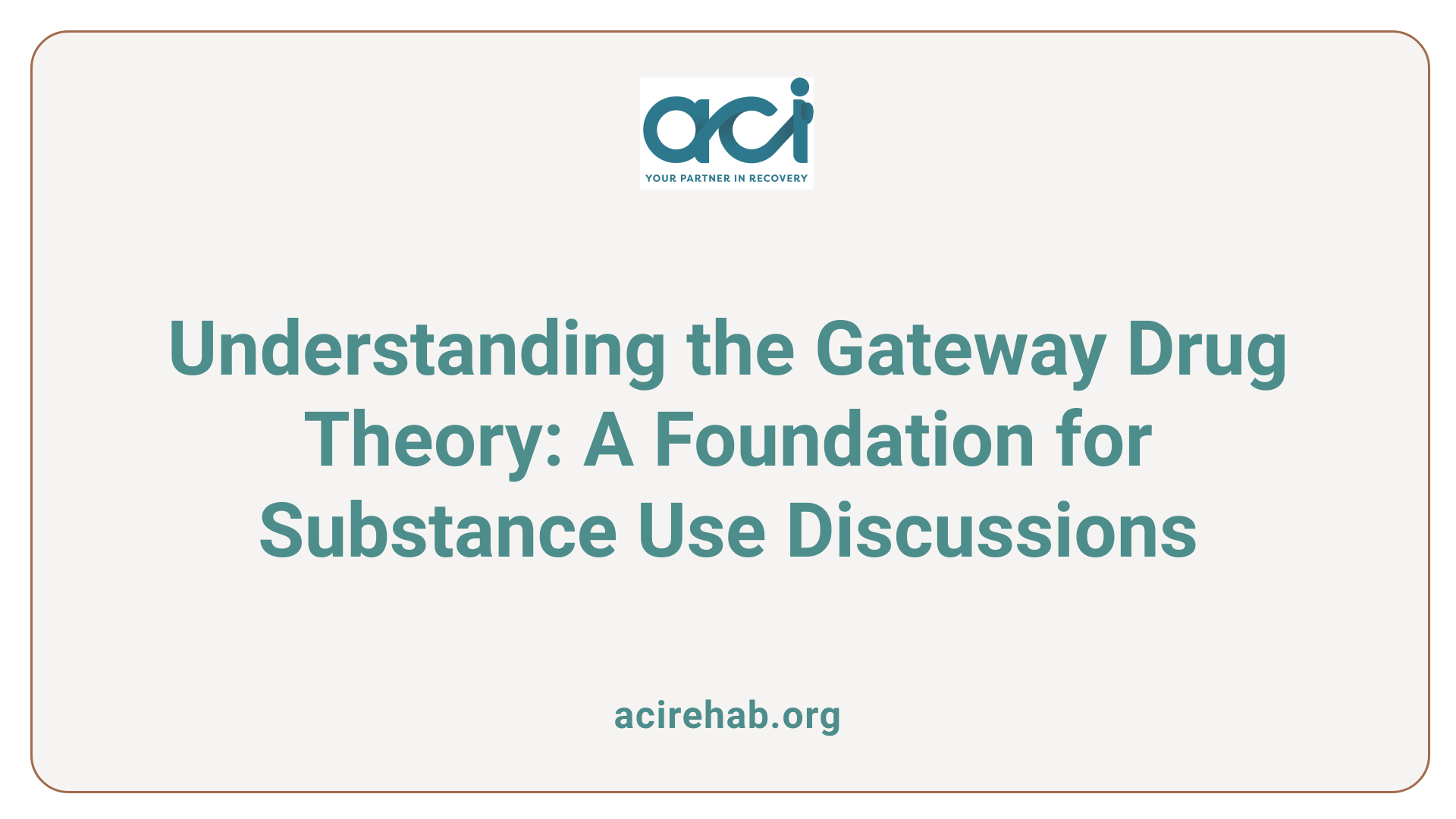
What is the gateway drug theory?
The gateway drug theory posits that the use of certain substances, such as alcohol, tobacco, and marijuana, may lead individuals to experiment with and ultimately use harder drugs like cocaine and heroin. First introduced in 1981, this theory gained traction during the War on Drugs in the 1970s, becoming a focal point in the discussions surrounding drug policy and prevention strategies.
While numerous studies suggest a correlation between early use of these substances and later substance misuse, critiques underscore the lack of conclusive evidence establishing a direct causal link. Risk factors, including economic conditions, genetic predisposition, and personal behaviors, significantly influence this progression into harder drugs. Therefore, the simple sequence of using gateway drugs is not universally applicable.
Historical Context
Historically, the gateway drug theory has been viewed as an oversimplification of a complex issue. Many researchers argue that this model neglects to account for the role of environmental influences, peer pressures, and individual mental health conditions in substance use patterns. The contention surrounding this hypothesis highlights its implications for public health policy, particularly in shaping prevention and intervention programs.
As societal attitudes toward substances like marijuana evolve due to increasing legalization, perspectives on the gateway drug concept also shift. New research trends are moving towards the Common Liability of Addiction model, suggesting that a combination of genetic, social, and environmental factors fosters addictive behavior across various substances rather than attributing addiction solely to initial exposure to gateway drugs.
Potential Gateway Drugs: Common Suspects
Which substances are commonly considered gateway drugs?
The conversation around substance use often highlights a few primary suspects identified as gateway drugs. These include:
- Alcohol: The most prevalent gateway substance, with about 66% of users reporting it as their initiation into substance use. Its accessibility and social acceptance make it a common entry point for many young people.
- Marijuana: Frequently labeled as a primary gateway drug, nearly 22% of those born in the 1990s reported marijuana as their first substance. Its perceived low risk may encourage further experimentation with harder drugs.
- Nicotine: Often the first drug that adolescents encounter, tobacco use is strongly linked to later alcohol and illicit drug use, increasing the odds of addiction.
- Prescription medications: Particularly opioids, which have gained acknowledgment as a gateway due to their potential for addiction, often leading users down a path toward illegal drugs.
Patterns of Usage
Research indicates that many individuals who experiment with more dangerous drugs usually start with these gateway substances. A significant 76% of participants reported trying substances first with friends, indicating social influence in initiating drug use. Furthermore, adolescents who engage with gateway drugs early in life will typically be more vulnerable to experimenting with more potent substances later on.
The journey from these initial substances to harder drugs isn’t definitive for everyone, but the patterns show a troubling trend that emphasizes the need for effective prevention strategies in communities to mitigate the risks involved with gateway drugs.
Risks of Initial Drug Use
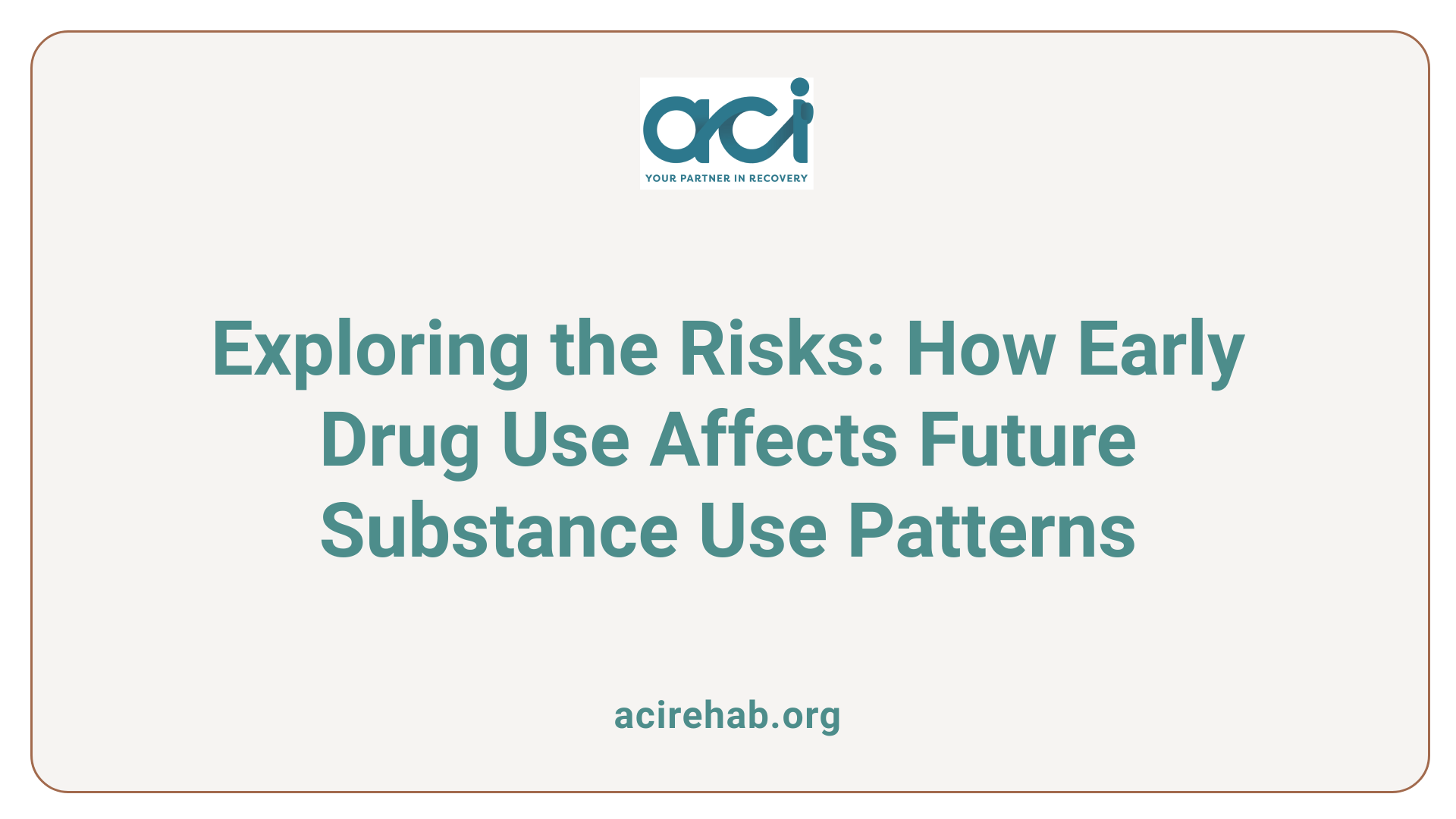
What are the potential risks of using gateway drugs?
The potential risks of using gateway drugs—such as alcohol, marijuana, and nicotine—can significantly increase the likelihood of progressing to more harmful substances. Evidence suggests that early exposure to marijuana can heighten susceptibility to addiction to stronger drugs like cocaine and methamphetamine. For instance, research indicates that adolescents who start using marijuana are 30 times more likely to use crack cocaine compared to non-users.
Understanding Early Use Implications
Tobacco users, especially those initiating use at a young age, are at a greater risk of developing addictions to a variety of substances later in life. Studies have shown that early tobacco use correlates with increased likelihood of alcohol and cocaine addiction. Similarly, alcohol, recognized as a potent gateway drug, is associated with higher rates of co-occurring substance use disorders among young adults, with significant percentages engaging in the use of other drugs.
Moreover, the environment plays a crucial role; individuals from unstable or dysfunctional homes may face compounded risks, such as early exposure to substances leading to increased likelihood of experimentation with drugs. This highlights the critical need for prevention strategies targeting early drug exposure to mitigate these risks effectively.
| Gateway Drug | Early Use Risks | Long-term Implications |
|---|---|---|
| Alcohol | Co-occurring substance use disorders | Increased risk of addiction |
| Marijuana | Heightened susceptibility to cocaine use | Potential for lifelong disorders |
| Tobacco | Greater likelihood of addiction to multiple substances | Long-term health issues |
Psychological Aspects of Gateway Drug Use
How does the psychological gateway theory explain substance use progression?
The psychological gateway theory explains how the initial use of certain substances, particularly milder ones like alcohol and nicotine, can pave the way for the use of more serious drugs. This sequence suggests that the experience of using a legal substance can alter brain chemistry and reward pathways, thereby increasing the likelihood of trying more potent illicit drugs such as cocaine and heroin.
Numerous studies support the notion that early exposure to substances influences users’ brain reward systems. For instance, marijuana, often cited as the primary gateway drug, has been shown to change dopamine pathways in the brain, making users more susceptible to addiction later on. This underscores the concern around adolescent substance use, highlighting how early engagement with these substances can lead to a cascade of further experimentation.
Notably, the context of use plays a critical role. Research indicates that 76% of individuals tried substances for the first time with friends, illustrating the substantial impact of social influences. This social dynamic can reinforce the initiation into drug use, forming a habitual pattern influenced by peer behavior and environmental factors.
Despite the circumstantial evidence supporting the gateway drug hypothesis, critics argue that correlation does not equate to causation. They contend that early drug use may reflect underlying behavioral issues rather than a direct cause of later substance use. Factors such as familial history of addiction, mental health conditions, and socioeconomic status further complicate the narrative.
Overall, the pathway from milder to more potent substances is complex and shaped by an interplay of personal, social, and environmental influences. A nuanced understanding of these dynamics is essential for developing effective prevention strategies aimed at reducing the impact of gateway drugs on vulnerable populations, particularly adolescents.
Alcohol and Its Role as a Gateway Drug
Is alcohol considered a gateway drug?
Yes, alcohol is often considered a gateway drug, as it can lead to the use of other substances, both licit and illicit. Numerous studies support the idea that early alcohol consumption increases the likelihood of trying drugs like marijuana or cocaine, particularly among adolescents.
Research indicates that nearly 66% of users reported alcohol as their first substance, with many experimenting with drugs after this initial exposure. For example, 54% of 12th graders who consumed alcohol also used tobacco and marijuana, demonstrating the intertwining nature of substance use among youth.
Environmental factors play a significant role as well; unstable home environments and peer influences can accelerate early alcohol use, which in turn increases the chances of later drug experimentation.
While not everyone who consumes alcohol will develop an addiction to harder drugs, alcohol is commonly viewed as a starting point for many individuals on a path to more dangerous substance use. Its accessibility and social acceptance contribute to its classification as a gateway drug, leading to further exploration of both legal and illegal substances.
Youth and Gateway Drug Exposure
How are youth affected by gateway drugs?
Youth are significantly affected by gateway drugs, which can have detrimental effects on their brain development during critical formative years, potentially leading to lifelong consequences. Legal substances like alcohol, nicotine, and marijuana may increase the likelihood of teens experimenting with harder drugs, although this progression is not guaranteed.
Research indicates that adolescents who use drugs are more prone to developing substance use disorders. The early use of gateway drugs can also impact academic performance, leading to declining grades and absenteeism, resulting in a higher likelihood of dropping out of school.
Moreover, substance-abusing youth are at a higher risk for mental health issues, including depression and suicidal thoughts. This vulnerability often extends to health-related problems and a greater propensity for delinquent behavior. The impact of substance abuse can disrupt family relationships, causing crises that affect emotional and financial stability within the household.
Long-term Impact
The long-term implications of early exposure to gateway drugs can be severe, altering the brain’s structures and functions, leading to heightened risk for addiction to more potent substances later in life. Studies show that early exposure to THC, the psychoactive component in marijuana, can activate changes in brain pathways that may increase sensitivity to addiction.
Additionally, a history of substance use in adolescence has been linked to adult substance use disorders and chronic health issues. These adults often find themselves facing difficulties in maintaining employment and relationships, stemming from their earlier drug use experiences.
In conclusion, the influence of gateway drugs on youth is wide-ranging, affecting not only their immediate well-being but also their future potential.
Controversies and Critiques in Gateway Drug Research
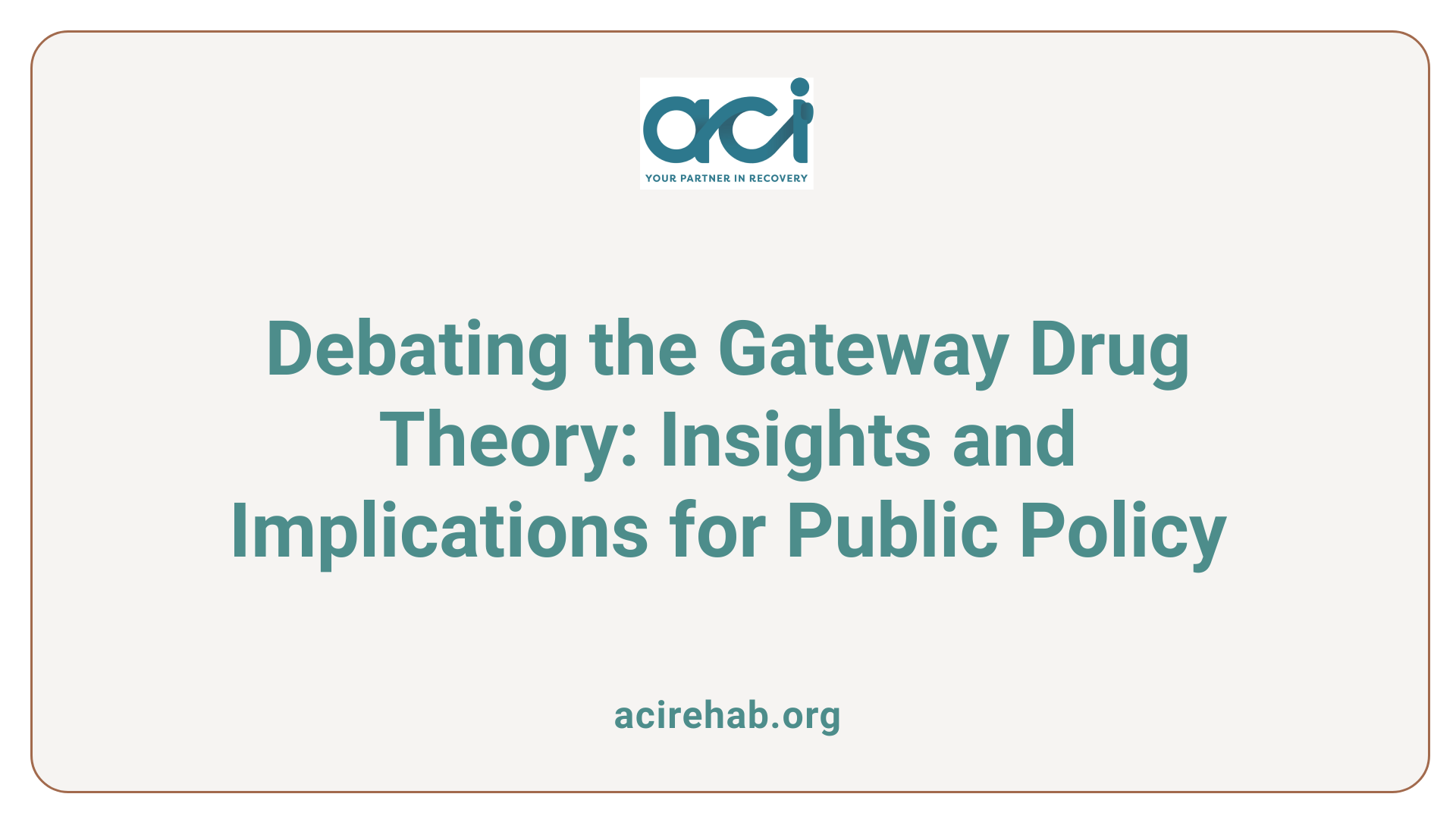
What controversies exist regarding the gateway drug hypothesis?
The gateway drug hypothesis has generated considerable controversy, particularly regarding the direct causal relationship it implies between the use of milder substances and the subsequent use of more dangerous drugs. Critics argue that not all individuals who use gateway drugs, such as marijuana or alcohol, will inevitably progress to harder substances. This raises questions about the validity of the hypothesis itself.
Role of Social and Genetic Influences
Social environment and genetic factors may play a more significant role in a person’s likelihood of moving to harder substances. For example, individuals raised in environments where drug use is normalized may be more prone to experiment with various substances, underscoring the importance of context in substance use behaviors. Moreover, genetic predisposition can influence an individual’s sensitivity to addiction, suggesting that addiction vulnerability varies widely among people.
Confounding Variables
Some researchers highlight the potential for confounding factors, such as pre-existing mental health issues, which could explain why some users transition to harder drugs, rather than the gateway drugs themselves being the primary cause. Additionally, the increasing legalization of substances like marijuana complicates the discussion, as it may alter both awareness and social perceptions, potentially changing use patterns.
Implications for Public Health Policies
Ongoing debates about the public health implications of labeling specific substances as "gateway" can influence policies and treatment approaches. This spotlight on gateway drugs may either stigmatize casual users or mislead prevention efforts, diverting focus from the individual’s overall drug use journey, including biological and social influences.
Strategies to Avoid Gateway Drugs
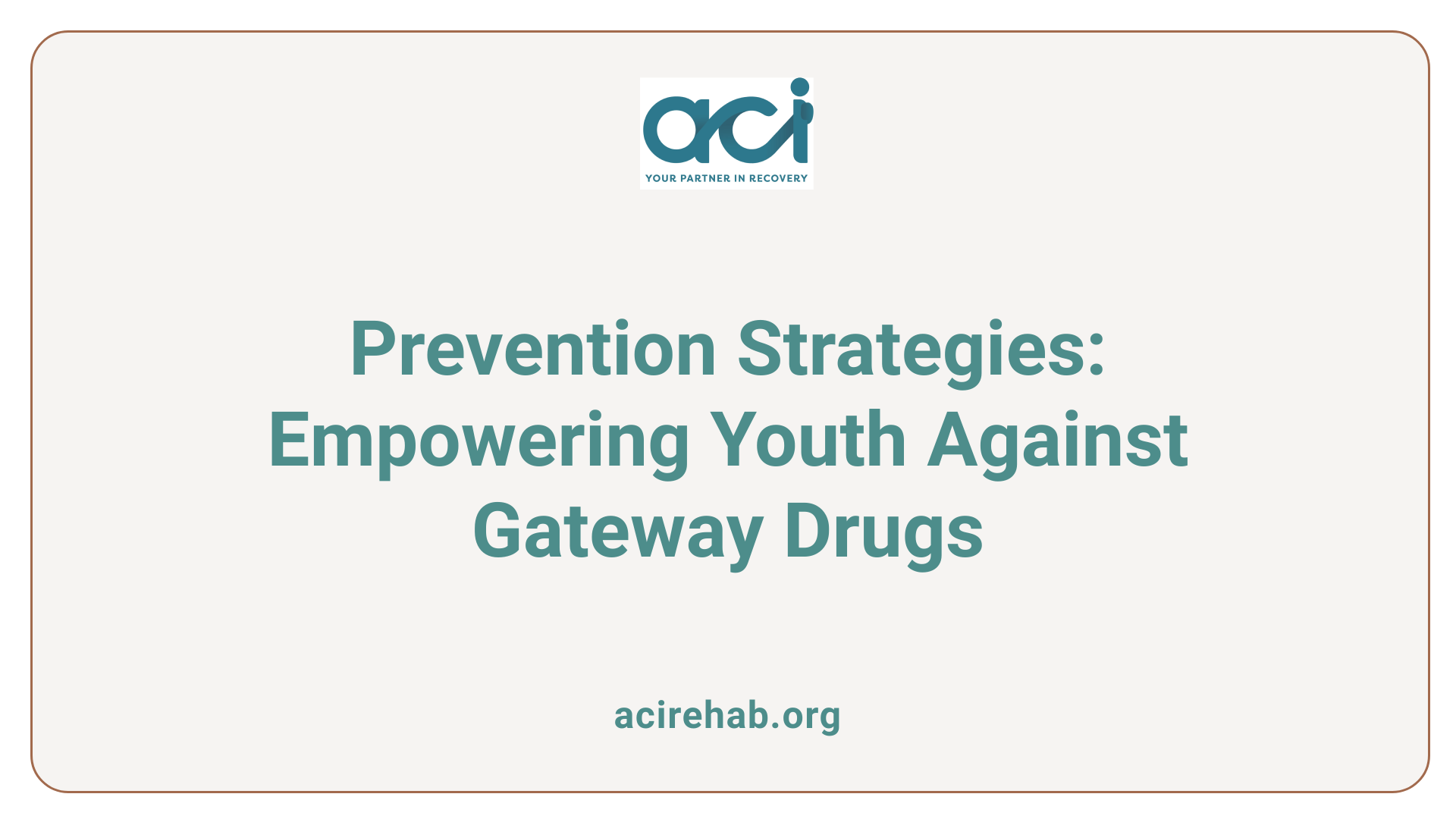
Prevention and Education
Education plays a vital role in preventing the use of gateway drugs. Schools and community programs can provide essential information on the risks associated with substances like alcohol, marijuana, and nicotine. Teaching young people about the consequences of substance use can empower them to make informed choices.
Healthy Decision Making
Individuals can avoid using gateway drugs by recognizing and addressing the underlying issues that may lead to substance use, such as stress or emotional triggers. It’s essential to:
- Avoid environments where drugs and alcohol are present.
- Seek support from friends and family who promote a sober lifestyle.
- Consult health professionals to discuss concerns and develop personalized action plans, especially for those with substance use histories.
Engaging in healthy coping mechanisms, like exercise or creative activities, can also help manage cravings. If someone struggles with substance use, learning from past experiences and seeking help or treatment options is crucial.
Rethinking Gateway Drugs in Today’s World
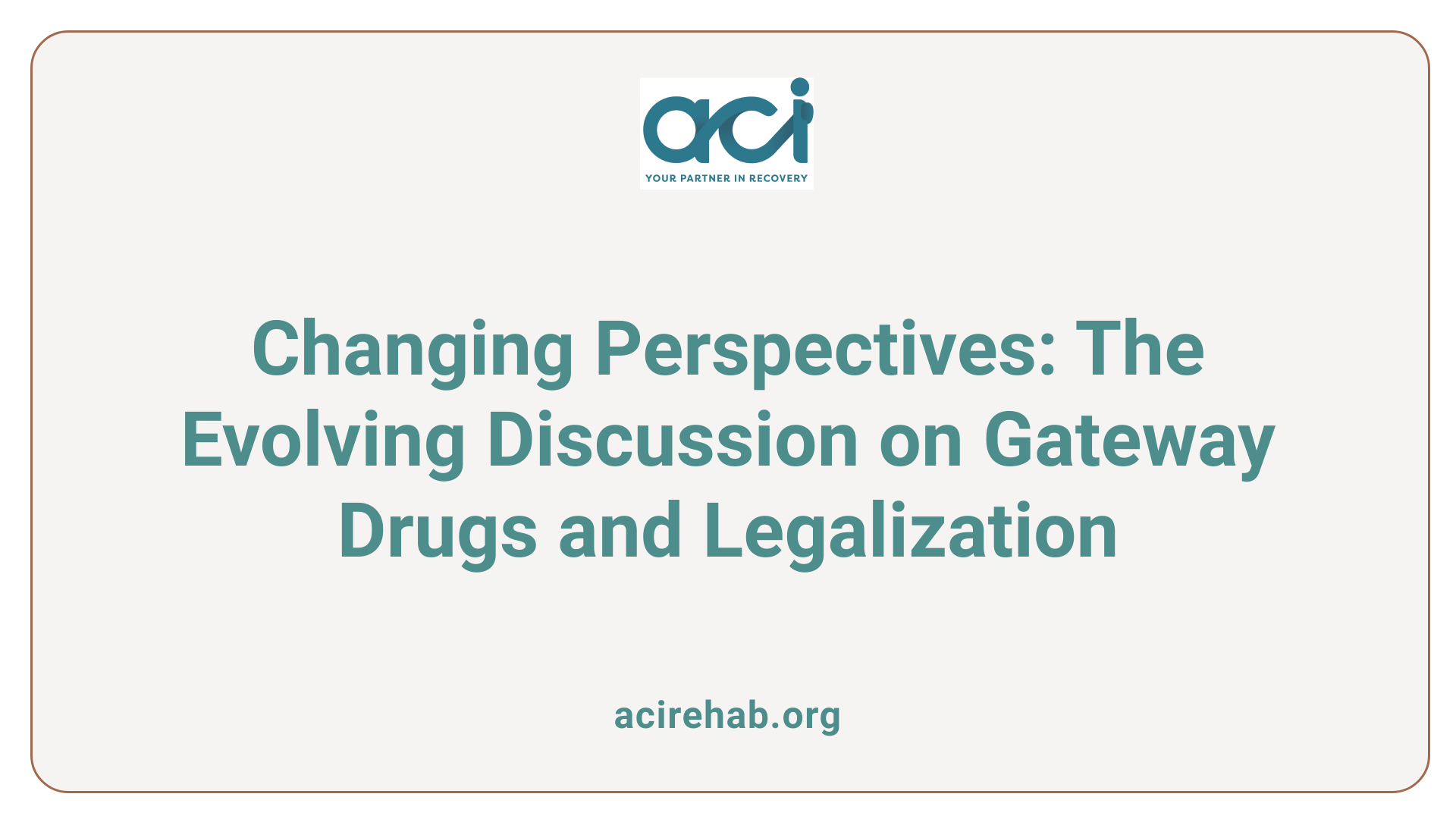
Changing Perceptions
The concept of gateway drugs has evolved significantly, particularly with changing societal attitudes towards substances like marijuana. Once primarily considered a path to harder drugs, marijuana is increasingly viewed in a different light due to its legalization in many areas. This shift has prompted discussions around its classification as merely a precursor to substance use. With a substantial percentage of users not transitioning to harder drugs, it’s essential to examine whether the gateway drug model accurately reflects current realities.
Role of Legalization
Legalization of marijuana has changed the landscape of drug use and perceptions. For instance, surveys indicate that young individuals who use marijuana do so within evolving social norms surrounding its consumption, leading to different patterns of use. This changing framework may diminish the stigma associated with marijuana and present an opportunity for more nuanced approaches to substance education. Furthermore, various studies suggest that early exposure to gateway drugs like alcohol and tobacco correlates with increased risks of later addiction but does not establish a direct cause-and-effect relationship. Consequently, understanding the multitude of factors influencing addiction—like obesity, genetics, and environment—becomes critical as we rethink strategies for addressing substance use among adolescents.
Reassessing the Role of Gateway Drugs
The concept of gateway drugs continues to play a significant role in understanding drug use patterns and informing public policy. While there is considerable evidence supporting the correlation between initial use of substances like alcohol, marijuana, and nicotine and the progression to harder drugs, ongoing research challenges the simplicity of the gateway theory, urging for a more nuanced view that considers individual, social, and genetic factors. As legal and societal attitudes towards substances shift, especially with increasing legalization, re-evaluating the gateway drug hypothesis remains critical. Understanding its complexities will help form more effective prevention strategies, ultimately reducing addiction rates and better supporting those at risk.
References
- Gateway drug Definition & Meaning – Merriam-Webster
- The Real Gateway Drug – American Addiction Centers
- Gateway drug effect – Wikipedia
- GATEWAY DRUG definition | Cambridge English Dictionary
- The Truth about Gateway Drugs and Addiction
- Exploring The Meaning Behind Gateway Drug
- Gateway Drugs: Examples, Warning Signs, & Avoidance Strategies
- What Does the Term “Gateway Drug” Mean? – Conifer Park
- What Are Gateway Drugs? Information and Prevention
- What Does Gateway Drug Mean? – ARIA

